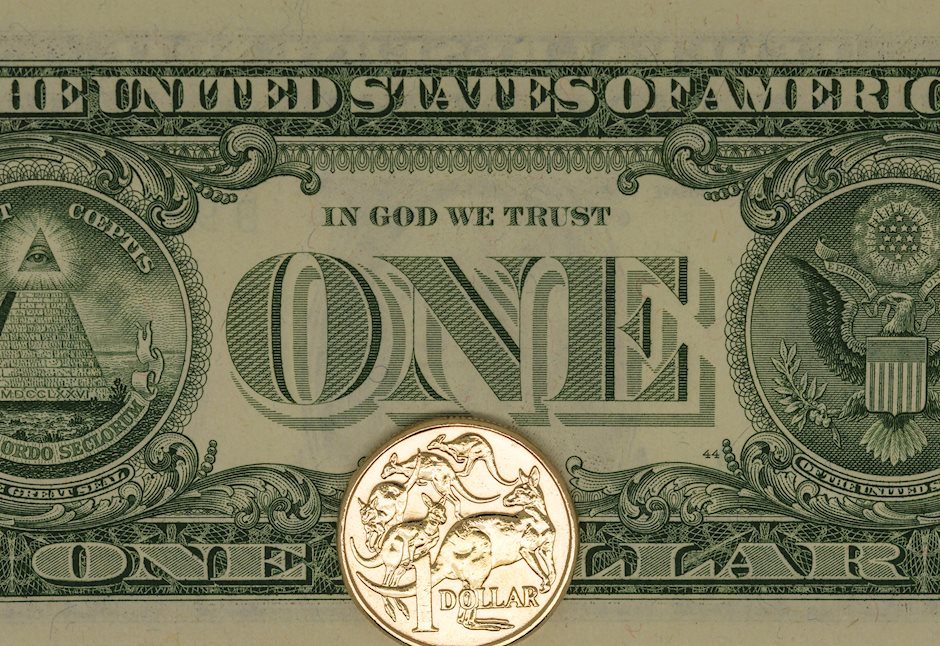AUD/USD fails ahead of 0.6700 mark, stalls its recovery from multi-week low set on Wednesday
- AUD/USD attracts some intraday sellers on reports that China will cut mortgage rates this month.
- Diminishing odds for a larger Fed rate cut underpins the USD and further contributes to the slide.
- Bets for the start of the Fed’s policy-easing cycle, the upbeat mood caps the buck and lends support.

The AUD/USD pair retreats around 40 pips from the vicinity of the 0.6700 mark, or a fresh weekly high set earlier this Thursday and drops to a daily low during the first half of the European session. Spot prices, for now, seem to have stalled the recovery from a four-week trough touched on Wednesday and currently trade around the 0.6670-0.6665 region, nearly unchanged for the day.
Reports that China will cut interest rates on $5 trillion mortgages as soon as this month to try and bolster consumption activity revive concerns about a slowdown in the world's second-largest economy. This, in turn, weighs on antipodean currencies, including the Australian Dollar (AUD), which, along with a modest US Dollar (USD) strength, turn out to be key factors behind the sharp intraday downfall.
The crucial US Consumer Price Index (CPI) report released on Wednesday indicated that consumer prices in the US are easing overall. That said, the core CPI suggests that the underlying inflation remains sticky and dashed hopes for a larger rate cut by the Federal Reserve (Fed) next week. This leads to an uptick in the US Treasury bond yields and lifts the Greenback back closer to the monthly peak.
Investors, however, seem convinced that the US central bank will begin its policy-easing cycle and lower borrowing costs by 25 basis points at each of the three remaining policy meetings in 2024. This, along with the upbeat market mood, keeps a lid on any further gains for the safe-haven buck and offers some support to the risk-sensitive Aussie. Traders now look to the US Producer Price Index (PPI) for a fresh impetus.
Australian Dollar FAQs
One of the most significant factors for the Australian Dollar (AUD) is the level of interest rates set by the Reserve Bank of Australia (RBA). Because Australia is a resource-rich country another key driver is the price of its biggest export, Iron Ore. The health of the Chinese economy, its largest trading partner, is a factor, as well as inflation in Australia, its growth rate and Trade Balance. Market sentiment – whether investors are taking on more risky assets (risk-on) or seeking safe-havens (risk-off) – is also a factor, with risk-on positive for AUD.
The Reserve Bank of Australia (RBA) influences the Australian Dollar (AUD) by setting the level of interest rates that Australian banks can lend to each other. This influences the level of interest rates in the economy as a whole. The main goal of the RBA is to maintain a stable inflation rate of 2-3% by adjusting interest rates up or down. Relatively high interest rates compared to other major central banks support the AUD, and the opposite for relatively low. The RBA can also use quantitative easing and tightening to influence credit conditions, with the former AUD-negative and the latter AUD-positive.
China is Australia’s largest trading partner so the health of the Chinese economy is a major influence on the value of the Australian Dollar (AUD). When the Chinese economy is doing well it purchases more raw materials, goods and services from Australia, lifting demand for the AUD, and pushing up its value. The opposite is the case when the Chinese economy is not growing as fast as expected. Positive or negative surprises in Chinese growth data, therefore, often have a direct impact on the Australian Dollar and its pairs.
Iron Ore is Australia’s largest export, accounting for $118 billion a year according to data from 2021, with China as its primary destination. The price of Iron Ore, therefore, can be a driver of the Australian Dollar. Generally, if the price of Iron Ore rises, AUD also goes up, as aggregate demand for the currency increases. The opposite is the case if the price of Iron Ore falls. Higher Iron Ore prices also tend to result in a greater likelihood of a positive Trade Balance for Australia, which is also positive of the AUD.
The Trade Balance, which is the difference between what a country earns from its exports versus what it pays for its imports, is another factor that can influence the value of the Australian Dollar. If Australia produces highly sought after exports, then its currency will gain in value purely from the surplus demand created from foreign buyers seeking to purchase its exports versus what it spends to purchase imports. Therefore, a positive net Trade Balance strengthens the AUD, with the opposite effect if the Trade Balance is negative.
Author

Haresh Menghani
FXStreet
Haresh Menghani is a detail-oriented professional with 10+ years of extensive experience in analysing the global financial markets.

















